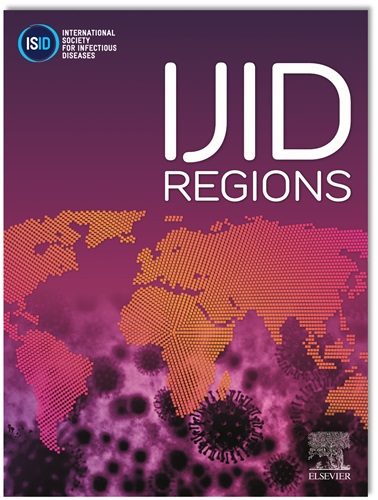Estimating global antibiotic needs for chronic obstructive pulmonary disease and community- and hospital-acquired pneumonia in 20 countries: A modelling analysis
IF 4.3
2区 医学
Q1 INFECTIOUS DISEASES
引用次数: 0
Abstract
Introduction
Antibiotic stewardship advocates for prudent antibiotic use. However, estimates of “appropriate” antibiotic use remain limited.
Methods
We estimated the total antibiotics required to treat chronic obstructive pulmonary disease (COPD) exacerbations and pneumonia in 2019 across the 20 most populous countries. Antibiotic needs were determined according to World Health Organization AWaRe guidelines. The proportion of cases requiring antibiotics was based on bacterial etiology averages. Patients not responding to first-line treatment were assumed to either recover after second-line treatment, discontinue further care, or die during treatment. Where two treatment options were available, patients were assumed to be evenly split.
Results
Penicillins (76.1%) and cephalosporins (22.6%) were the most frequently needed antibiotics for treatment of community-acquired pneumonia, followed by hospital-acquired pneumonia and COPD exacerbations. India and China were estimated as the greatest consumers of penicillins (37% and 21% of total use, respectively), followed by the US, Brazil, and Indonesia (15% combined). Per capita penicillin consumption was highest in India, Brazil, and Germany. In total, 2276,046 and 676,098 million mg of penicillins and cephalosporins, respectively, were needed.
Conclusion
Prudent antibiotic use is essential to curb antimicrobial resistance. This framework offers a method for estimating needs and informing global planning.
估计20个国家慢性阻塞性肺病和社区和医院获得性肺炎的全球抗生素需求:建模分析。
前言:抗生素管理倡导谨慎使用抗生素。然而,对“适当”使用抗生素的估计仍然有限。方法:我们估计了2019年20个人口最多的国家治疗慢性阻塞性肺疾病(COPD)恶化和肺炎所需的抗生素总量。抗生素需求是根据世界卫生组织AWaRe指南确定的。需要抗生素的病例比例基于细菌病因学平均值。对一线治疗无效的患者要么在二线治疗后康复,要么停止进一步治疗,要么在治疗期间死亡。在有两种治疗方案的情况下,假设患者平均分配。结果:社区获得性肺炎患者最常使用的抗生素是青霉素类(76.1%)和头孢菌素类(22.6%),其次是医院获得性肺炎和慢性阻塞性肺病加重。据估计,印度和中国是青霉素的最大消费国(分别占总使用量的37%和21%),其次是美国、巴西和印度尼西亚(合计占15%)。人均青霉素消费量最高的是印度、巴西和德国。总共需要的青霉素和头孢菌素分别为2276046和676098万毫克。结论:谨慎使用抗生素对抑制抗菌药物耐药性至关重要。该框架提供了一种估算需求和为全球规划提供信息的方法。
本文章由计算机程序翻译,如有差异,请以英文原文为准。
求助全文
约1分钟内获得全文
求助全文
来源期刊
CiteScore
18.90
自引率
2.40%
发文量
1020
审稿时长
30 days
期刊介绍:
International Journal of Infectious Diseases (IJID)
Publisher: International Society for Infectious Diseases
Publication Frequency: Monthly
Type: Peer-reviewed, Open Access
Scope:
Publishes original clinical and laboratory-based research.
Reports clinical trials, reviews, and some case reports.
Focuses on epidemiology, clinical diagnosis, treatment, and control of infectious diseases.
Emphasizes diseases common in under-resourced countries.

 求助内容:
求助内容: 应助结果提醒方式:
应助结果提醒方式:


